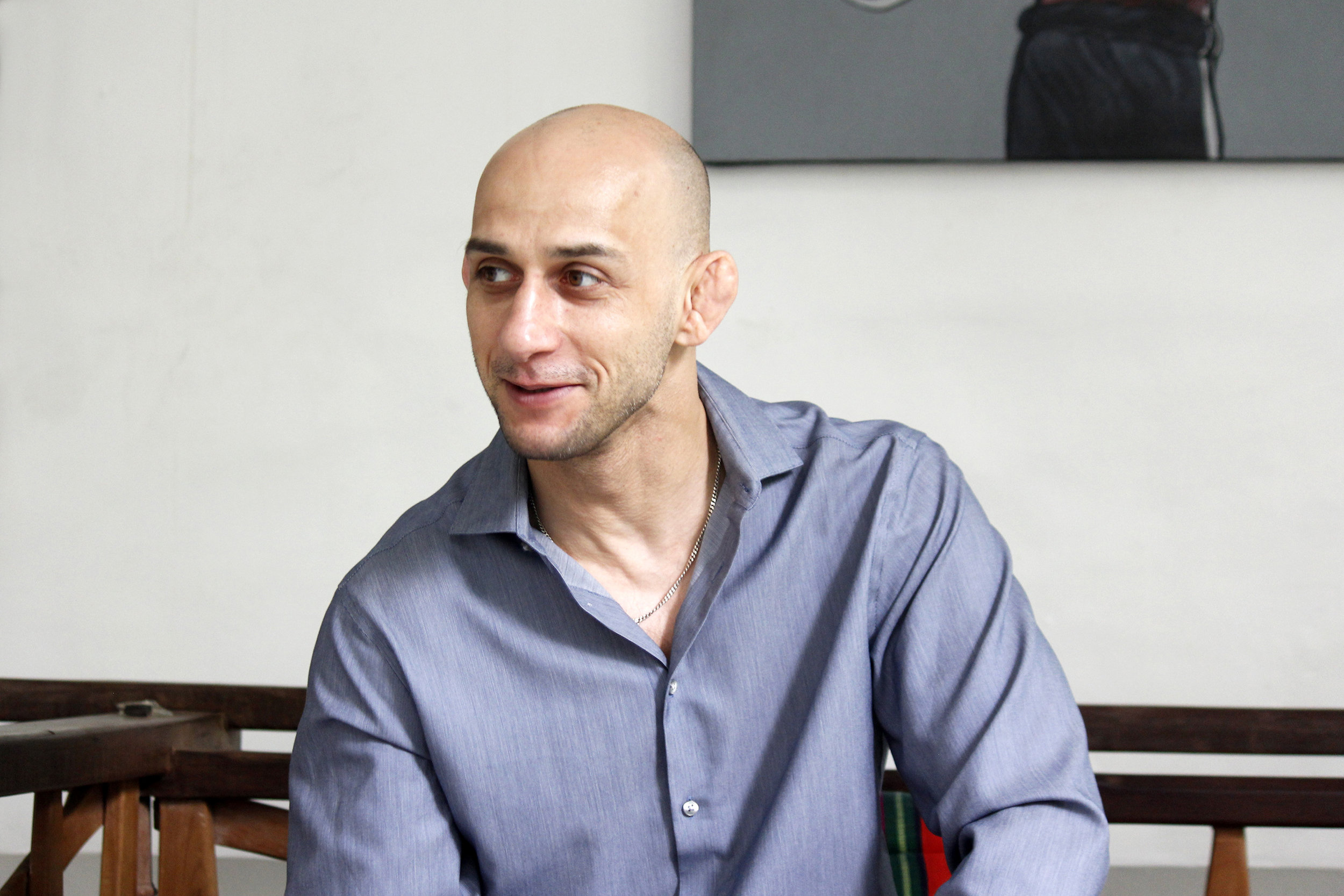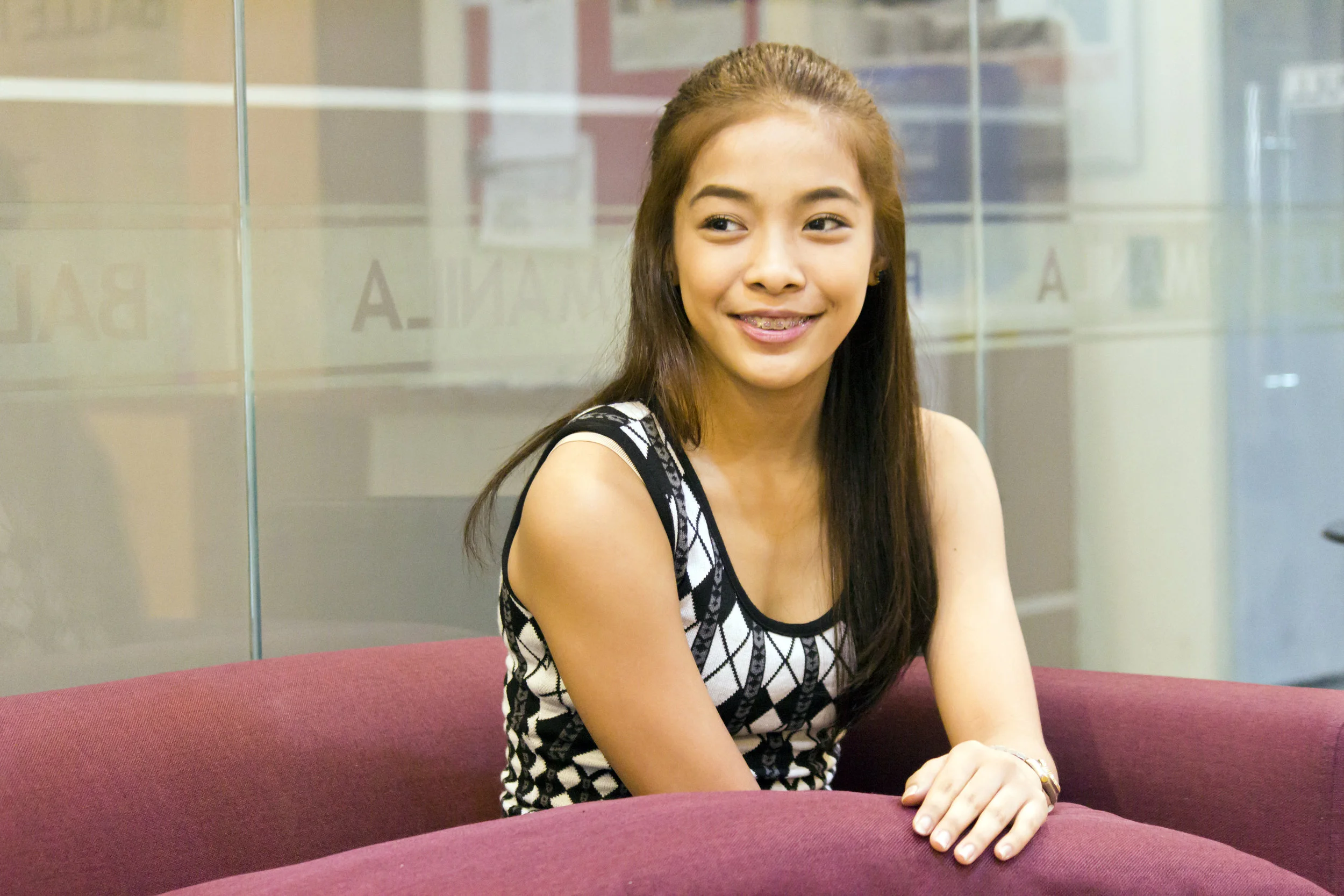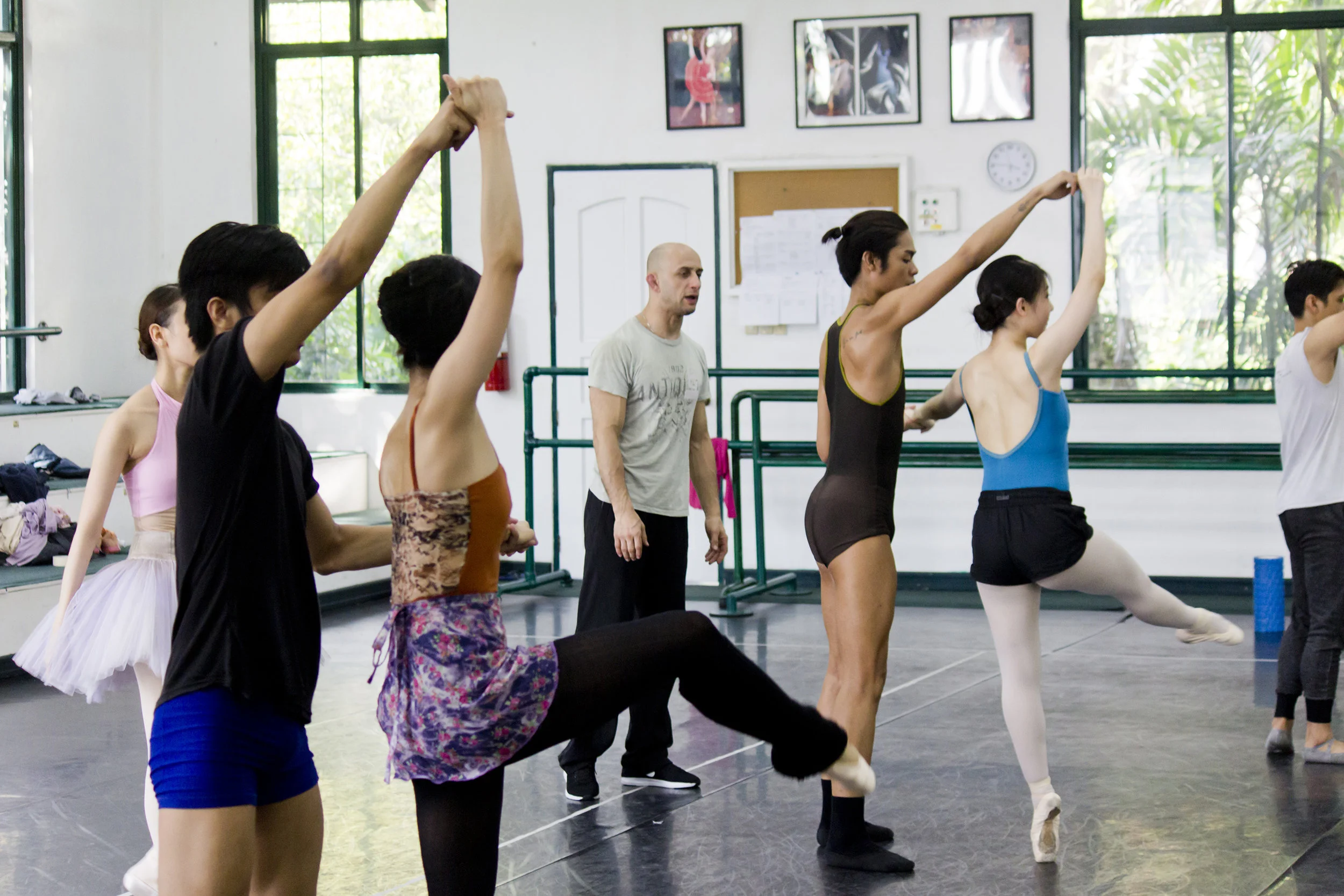Russian choreographer George Birkadze creates a tango on pointes for Ballet Manila
An excerpt of George Birkadze's tango-inspired Bru danced by Nicole Barroso and Joshua Enciso. Video by Giselle P. Kasilag
By Jv Ramos
Working and learning from foreign choreographers is one of the things that dancers in Ballet Manila look forward to. Apparently, the choreographers feel the same away about the company. Because of the way the dancers handle themselves – they basically are addicted to ballet and wouldn’t complain about dancing all day – guest choreographers are thrilled to try out new concepts with them.
Among these is Russian choreographer George Birkadze, ballet master at the Boston Ballet and faculty member at the Boston Ballet School. Birkadze flew to Manila this summer to work on two pieces for BM (Bru and Imperial) aside from fulfilling his role as a judge in this year’s Asian Grand Prix regionals.
Choreographer George Birkadze is thrilled to be working with Ballet Manila because of the shared Russian training in ballet. Photo by Jimmy Villanueva
“How do I find the dancers here in BM? I really like working with them because everyone here seems to really like ballet,” he says in jest. Reflecting on the days he spent in the studio, he adds, “They all volunteer; they all want to be part of the choreography I’m developing.”
The sessions with the dancers also ran smoothly as George and BM artistic director Lisa Macuja-Elizalde share ballet roots. “We come from a similar dance background, the Russian school, so we agree on things. We are on the same page.”
One of the creations that they agreed on is Bru, a piece specially made for BM company artists Nicole Barroso and Joshua Enciso, who qualified for the prestigious USA International Ballet Competition in Jackson, Mississippi in June. Nicole and Joshua are the first junior dancers from the country to ever qualify for what’s considered “the Olympics of ballet.”
“When I found out that I was doing choreography for Jackson, I immediately looked at the basic factors: It’s for juniors; it’s a contest. So, I asked myself, what would make these junior dancers – well, not necessarily win – but stand out in the competition?”
After watching videos of Nicole and Joshua, he concluded “that the piece shouldn’t just be unique, it should highlight the strengths of the dancers. Then, I figured, to make them stand out, I’m going to do a tango. Young dancers never do tango; the dance is all about maturity.”
So, how did the prima ballerina respond to this tango idea of his? According to George, Lisa just asked, “Are you sure?” and when he assured her that it was going to work, Lisa already let him teach her two talented juniors.
George rehearses with Joshua Enciso and Nicole Barroso, on whom he choreographed the tango-inspired Bru, which the pair will dance at the USA International Ballet Competition. Photo by Giselle P. Kasilag
But that wasn’t the end of the questioning. Whenever he would reveal that Bru is based on the tango, people would exclaim, “Are you serious? Tango on pointe shoes? On pointe shoes?” To which the Russian choreographer would reply, “Yes, yes, I’ve tried it with my wife and it can be done.” Such comment would make others even more uneasy as his spouse Ashley Ellis is a principal dancer at the Boston Ballet!
How does the whole idea of tango on pointe shoes work out then? George replies, “I don’t want to say that I created my own style of tango. I really don’t want to say that, but what I can say is that I saw all the styles of tango, with their character shoes and heels, and I would say that [in my piece Bru], I’m doing a fusion of tango moves on pointe shoes, with a very classical mark.”
Doing this would allow Nicole and Joshua’s strengths to be seen, which was an objective of his from the beginning, as well as show their entire range of emotions.
Both very serious about ballet, Nicole and Joshua received George’s idea well, but got very shocked upon knowing that everything in this contemporary piece was three counts faster. “They got scared when I told them that,” shares the choreographer, “But when I told them where the tango originated from, they said that it all makes sense.”
George relays what he explained to Nicole and Joshua: “Ballroom tango is what people are familiar with. What many don’t know is the original tango actually involved two men. Both men dancers had knives [tucked in their heels], and in the dance, they would have to prevent the other from taking their knife and they, too, have to try and grab the knife of the other. The real tango is actually very deadly – they fight until the end. Why do you think it’s always intense?”
“When I told them this, Nicole immediately got the character of Bru. She’s very talented, that one,” enthuses George. “Nicole is a dancing machine. Any company would be happy to have her. She’s just a freaking terminator on the dance floor.”
The talent from the Boston Ballet lets us in on the ballet world: “There’s this expression we have, ‘You work like a Russian ballerina.’ That means that you do things again, again, again, again and again, and would volunteer to dance for the second cast, even when you’re tired. Nicole works like a Russian ballerina.” Letting out a laugh, George points out, “Well, it only makes sense since Lisa is her teacher.”
“There’s an awkward chemistry between them that gives the piece a special color,” says George Birkadze of Joshua Enciso and Nicole Barroso. Photo by Jimmy Villanueva
The guest choreographer relates about the 16-year-old ballerina: “Nicole will not admit that she’s tired in rehearsals. There was a time when I noticed that she needed a break so we sat down and talked. When it was time to head back, she quickly stood up [and approached the dance floor] as I was just about to stand up. She’s very fast, that one. The kid is very talented and emotionally very mature. She’s a hard worker.”
As for her partner Joshua, George notes that he, too, is very talented. “Nicole has a natural gift, meaning she doesn’t have to think, she just dances, gets it immediately and somewhat flies. Josh, on the other hand, is able to listen and is able to do things with a scientific approach.”
Always seeing things with an instructor’s eye, George analyzes that for Joshua to reach his full potential, he’ll have to practice more pas de deux skills and do more adagio. “But he’s going to be fine. I myself [at one point] thought that I had danced a lot, did a lot of partnering. I thought that I was a well-rounded dancer, but that all changed when I did Swan Lake with Mirta Pla.”
When he danced the White Swan adagio with this Cuban ballerina, George says he realized it was only then that he became a well-rounded dancer. “It’s very detailed and slow. It’s a very difficult adagio. It’s only after that when I became a principal dancer. It’s only after that when I could dance any adagio. Every dancer needs a click and with Josh, I really think that it’s adagio.”
Regarding how Nicole and Joshua are doing with Bru, George says he enjoys watching them dance. “There’s an awkward chemistry between them. It has perhaps to do with their youth. Young guys are shy, and that gives the piece a special color. Yes, I really like the interaction between them. It’s awkward and that’s good. There really are some pieces that don’t look good if danced with your [real-life] partner.”
George shows a clip from Romeo and Juliet in which the dancer playing Juliet issues a silent scream, to underscore how raw emotion and powerful music can create an intense moment on stage. Photo by Jimmy Villanueva
George contends, “I truly believe that this is a successful tango. I normally don’t like my choreographies – well, I actually only like one. It’s one that I made for famous dancers and it has already been performed in four companies. Anyway, I would have to say that this tango is my second favorite choreography.”
Asked what ballet competitions do for people who would like to have a professional dance career, George replies, after careful thinking, “From the point of view of a teacher, competitions are [where you’re] meant to see or compare yourself with other dancers and other schools. It’s good experience, but in the progression of a dancer, competition doesn’t do too much. What I mean is being a dancer isn’t all about winning competitions. These just make you aware of how it feels to be under pressure.”
Having been a judge of ballet competitions, he also shares that it’s easy to spot contenders who treat ballet only as a hobby and those who are serious about turning it into a career. He looks back at his judging experience Asian Grand Prix regionals and comments how BM’s contenders made the field noticeably uneven, “The kids are able to perform professionally already. Yes, they made some mistakes but they’re very good.”






